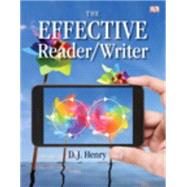The revolutionary approach of D.J. Henry’s The Effective Reader / Writer offers a visually rich, high-interest, and down-to-earth approach that reinforces the reading, writing, and thinking processes while showing students how to take responsibility for their learning.








